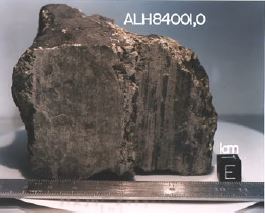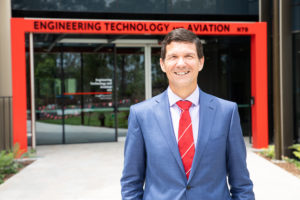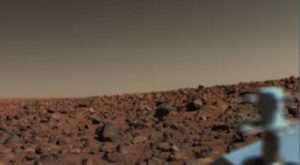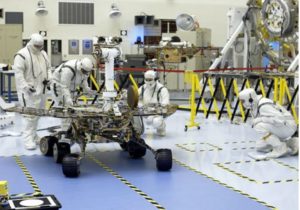The Head of the School of Information and Communication Technology Professor Paulo de Souza says our knowledge of Mars has come a long way in the last 50 years but current and future missions will determine whether life on the red planet is truly possible.
Professor de Souza previously worked withNASA on two Mars rover missions and has been fascinated by space and life beyond earth since his childhood in Brazil.

Image taken by the Viking mission in 1976
After the Viking 1 and 2 expeditions to Mars in July 1976, images taken showed what some thought was the face of Christ on the surface of the planet.
“I could not sleep for a week because of this image, it was again playing with our imagination that maybe there was intelligent life on the surface of Mars,” Professor de Souza said.
“This fueled a lot of work by all sorts of mathematicians looking at the face…they saw a city nearby with structures that look like pyramids….
“You see how many UFO magazines were sold with those images!”
 Professor de Souza said Mars has lived in our imaginations for a long time…case in point the 1938 radio presentation of War of the Worlds had many convinced martians were coming to attack us.
Professor de Souza said Mars has lived in our imaginations for a long time…case in point the 1938 radio presentation of War of the Worlds had many convinced martians were coming to attack us.
During the last 5 decades, Mars has been visited by a number of satellites, landers and rovers. Together this fleet changed our understanding about the evolution of our Solar System and fueled the quest for life beyond Earth.
“We have more stars in the universe than grains of sand in all the beaches of the world. That might give you an idea about the scale of the universe,” Professor de Souza said.
“If we look at the solar system today and we think about where life could be, one of those places is Mars.”

Early insights showed Mars was a planet without water, which indicated there was no chance of life, but things changed in 1984.
“Researchers went to Antarctica and found a crucial piece of rock that is a meteorite and called it ALH84001,” he said.
“That rock came from Mars and we know that because the analysis of radioisotopes made by Viking show us they are in the same ratio of the radioisotopes in this meteorite.
“More than that it is made of carbonate which is a group of minerals that needs water to be formed.
“That was a discovery that might be our first evidence of life beyond earth”.

Professor Paulo De Souza
Professor de Souza says more recent discoveries about Mars reveal not only was there water once, in fact oceans as salty as the Dead Sea, but hot springs and fresh water streams.
“Mars is a fascinating place. It is pretty cold,” he said.
“On a very hot day the temperature would be close to zero degrees, every night it goes to temperatures below -80, -100 degrees C.
“Your instrument must survive dramatic temperature changes every day.
“All the electronics have to be built to survive Temperature stresses, cosmic radiation and many other things.
“Gravity on Mars is about 38% of ours.
 “The atmosphere is just one percent of the atmosphere we have here. Winds can be very intense — you have dust storms that take the entire planet at once, and they can last for several weeks if not months.”
“The atmosphere is just one percent of the atmosphere we have here. Winds can be very intense — you have dust storms that take the entire planet at once, and they can last for several weeks if not months.”
He says a day on Mars goes for 24 hours and 40 minutes.
“If we have to wake up the rover on Mars every day at 9am, then tomorrow will be 9.40 then 10.20 then 11am then 11.40am…
“It is like daylight savings every day. It is terrible on you. You know what its like to have that extra hour so imagine that 40 minute every single day. Its quite challenging to work in.”
Professor de Souza says there are currently three new missions being planned for Mars, with varying levels of complexity.
What they find will help with preparations for manned missions to Mars.
“The mission from China is quite an ambitious vision and it will be quite an accomplishment of engineering,” he said.
“I really praise UAE for the work they have done to put a mission of some complexity together.
“The other is Perseverance, which comes with a helicopter called Ingenuity which will be an assisted robotic mission.”

A NASA Mars exploration rover
Perseverance aims to send back samples of the red planet by 2031, via a rocket for chemical analysis on Earth, using powerful microscopes that are too large to fit in a rover.
Professor de Souza says we don’t yet have the technology required for astronaut missions to Mars but Australian companies and universities are well placed to offer their expertise in pursuing what’s required.
For more fascinating insights on the red planet, the history of space exploration there and what the future holds, check out Professor de Souza’s full 50 Years of Mars Exploration presentation.
